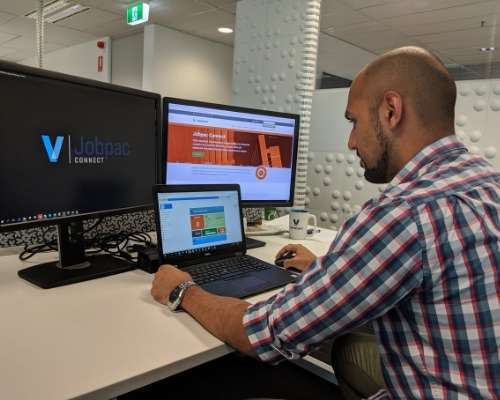5 Minute Read
December 15, 2021
0%

Over the years project management and project management software for construction has evolved in massive ways. Sure, a lot of the tools and methods we use today have been tried and tested over centuries, but much has changed in ways our predecessors could never have imagined. As technology has advanced, so have the ways in which we plan, construct and develop everything from bridges and schools to skyscrapers, hospitals and everything in between. It’s an industry that is constantly innovating and, if you want to stay at the top of the pile, you need to be prepared to move with the times.
As construction and technology both become more and more advanced, the traditional siloed approach to managing construction projects becomes more and more problematic. This narrow-sighted perspective can lead to real problems in the efficiency of a project, which could cause irreparable damage both to the project and your company’s brand. Instead, today’s modern construction projects need a connected, real-time construction management experience. This allows the data, workflows and complexities of your projects to be easily shared, analysed, discussed, communicated and understood, and result in meaningful action across every phase of the construction project.
Construction project management software must be connected with real-time data and workflows in order to be efficient and successful and keep project teams on the same page. The siloed approach just doesn’t cut it anymore.

A 2020 survey highlighted that nearly a quarter of all construction companies are using six or more separate applications to manage their daily operations. On top of this our recent research found that some 48% of project managers said their project management software had only basic or no data and workflow connections among the other software systems in their company. Now that might not seem like a big issue, but when—for the most part—none of these systems and applications talk to each other, then problems start to arise. Most commonly, these companies have to manually input the information in several different places, leaving a wide margin for human error.
Having multiple versions of the same document across various different platforms then brings with it the potential headache of ensuring everyone is working from the right version. Moving from a paper system to a digital system doesn’t necessarily make your company more efficient. In most cases it simply just shifts the problems to a new place.
So, what does a connected construction approach actually look like, and how can it benefit your company? Well, as we’ve already alluded to, having a single point of access and information for the various aspects of your construction project can do wonders for your efficiency. Bringing together everyone to collaborate under one platform—with a single source of unified data—is proven to have a meaningful impact on the success of a project, meaning you can keep your team and your clients happy at the same time.
But the connected construction experience can also offer so much more than this; the benefits are truly wide-ranging. Bringing everyone together earlier in the process can help identify potential choke points later in the project that might not have been noticed if working in silos. This can result in everything from fewer change orders and less wasted time and materials right through to lower project costs, which in turn means more profit for your business.
Plus, more than anything else, collaboration offers the potential for innovation, as people come together to share ideas and knowledge, which can only really be a benefit for you and potentially the industry as a whole.

The evolution of the construction industry is not going to stop anytime soon. As technology continues to advance, the industry will need to follow suit as new and even as yet unimagined concepts and ideas come to fruition. And the fact is, companies that are not willing—or not able—to keep up with this will be left behind—replaced by those who can adapt quickly and efficiently.
In order to make sure that you’re not one of those left behind, scrapping those silos and embracing connected construction workflows is absolutely vital. The silos that have become so common in our industry are hampering us now—and not only from an efficiency perspective. Removing them can also reduce human error, streamline complex workflows and, crucially, save you money.

It’s probably a pipe dream to imagine that silos will ever truly be a thing of the past, but that’s no reason to stand idly by. The old mantra of ‘we’ve just always done it that way’ simply doesn’t cut it if you want to stay relevant and profitable.
The first step is to carefully outline your requirements, to find a connected construction suite from a reliable technology vendor that works for your business. Understand your own processes and how you operate and identify the key places where connected software can best help you thrive.
Prone to communication mix-ups? Maybe interconnected onsite mobile apps are the priority. Far too many menial, manual tasks? Make sure your connected project management software includes automation tools to simplify matters. And, don’t forget to make sure your connected construction software was actually designed for contractors like you.
These days, technology is playing a large role in bringing project teams together, even when they’re physically disconnected, and the right solution can facilitate the type of teamwork you’re looking for.
5 Minute Read
December 15, 2021
3 Minute Read
November 9, 2021
4 Minute Read
November 18, 2021